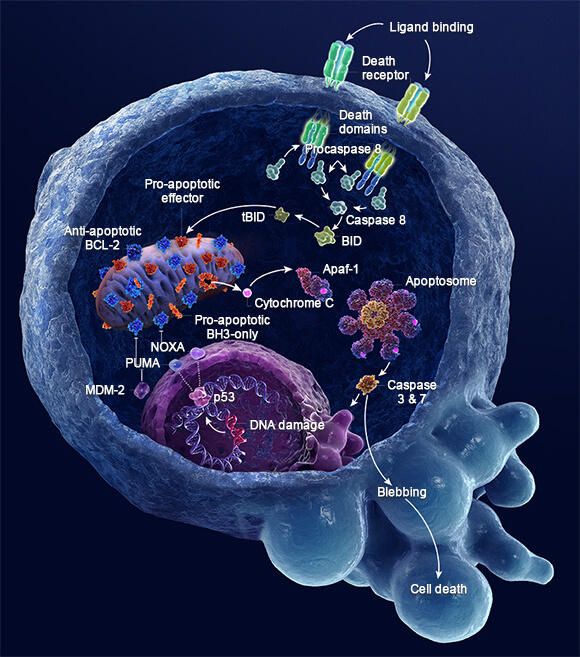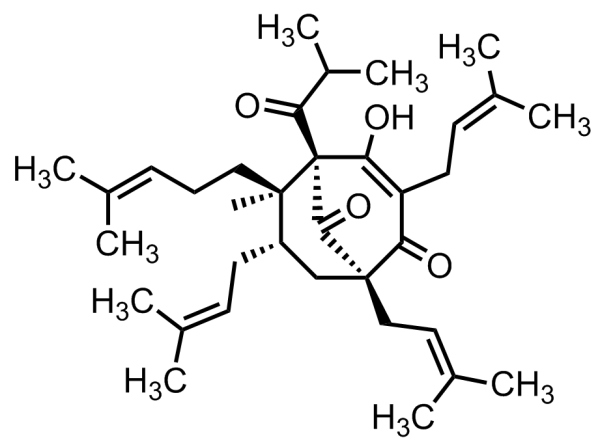Video originally posted by Genentech. From their site:
“Apoptosis is often evaded in cancer cells via overexpression of anti-apoptotic Bcl-2 family proteins and dysregulation of pro-apoptotic proteins. The Bcl-2 family members bind pro-apoptotic proteins to prevent apoptosis mediated by the intrinsic apoptotic pathway.
Bcl-2 is overexpressed in several hematologic malignancies, including non-Hodgkin’s lymphoma. Preclinical studies demonstrate that Bcl-2 acts as a key regulator of the intrinsic apoptotic signaling pathway by sequestering and neutralizing pro-apoptotic molecules, such as Bax.7 Thus, the anti-apoptotic protein promotes B-cell survival by inhibiting apoptosis, which may result in oncogenic chemotherapy resistance in hematologic malignancies”.
This cool image is also Genentech’s.
Impact of bone marrow stromal cells on Bcl-2 family members in chronic lymphocytic leukemia
A new face of BCL-2 inhibition in CLL – inhibiting BCL-2 can promote cell death by perturbing calcium signaling!
“Zhong et al focus on a different facet of BCL-2, the BH4 domain that is involved in the interaction with IP3R. Using an oligopeptide derived from a site on IP3R found to be involved in binding BCL-2, the authors had previously demonstrated the ability to disrupt the BCL-2:IP3R complex and alter calcium signaling. This current report is noteworthy in two ways: first, it reports a modification of the peptide that increased cytoplasmic calcium concentrations; and second, it finds that CLL cells are selectively susceptible to death induced by the calcium signaling…”


